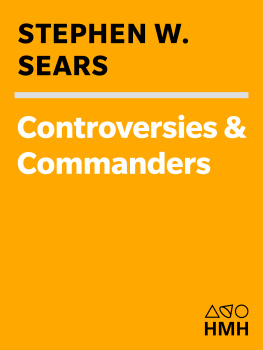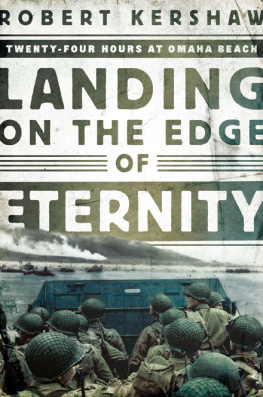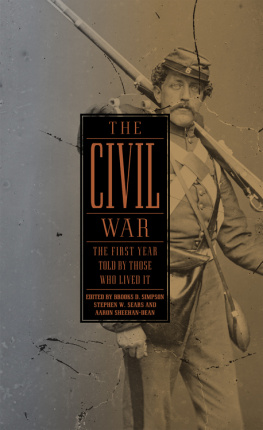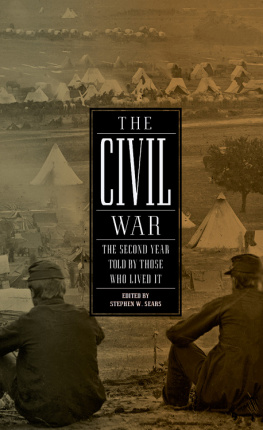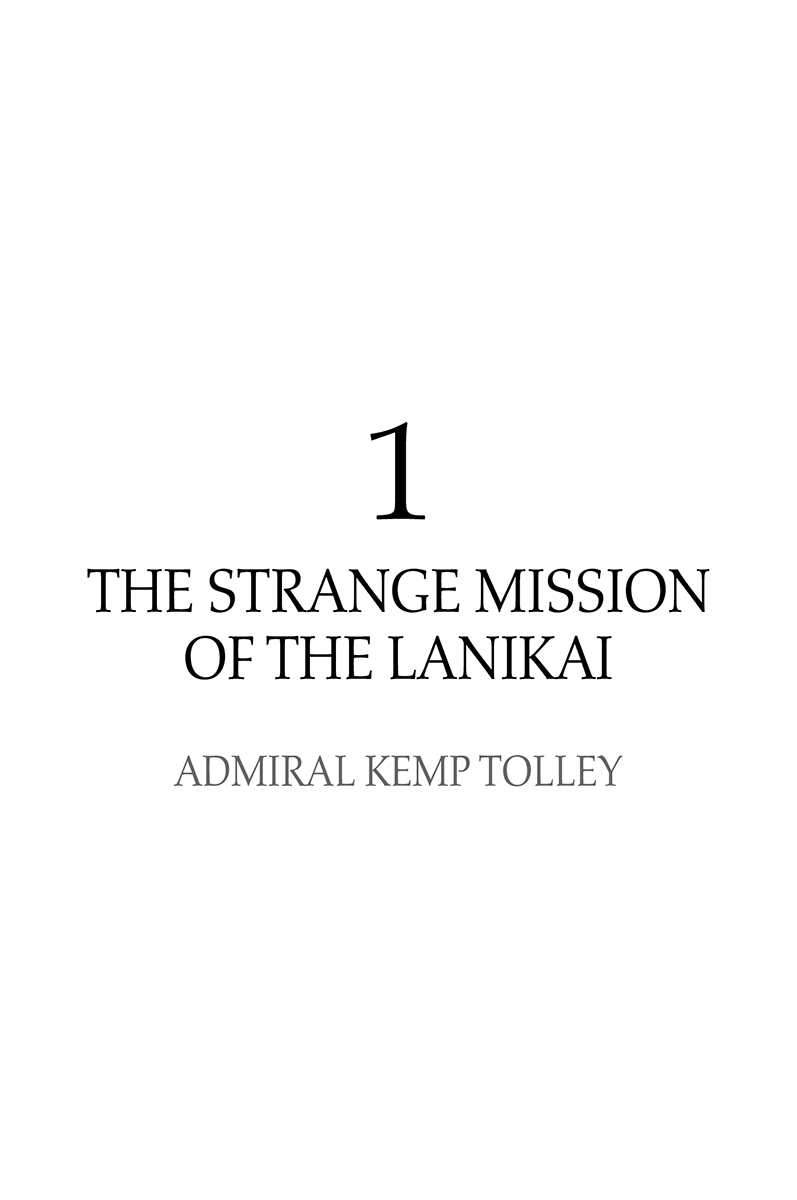These eyewitness accounts of World War II are unique. Each of the men (and in the case of Rosie the Riveter Remembers, each of the women) witnessed the war as an individual and from an individuals perspective. These perspectives are enormously varied - that of a general in the field and an admiral on the bridge, that of a Marine corporal, a seaman second class, a mess cook, and a civilian caught in the trap of war. Some are the vital raw materials of history. Others are thoughtful and expert interpretations that comprise the stuff of history. Everyone in these pages was there , seeing, recording, remembering, and adding to our store of knowledge of this greatest war in history.
There is here, too, a unique consciousness of the importance of history, of getting the story right and setting the record straight. A Navy interrogator seeking to fill out the record of the loss of the light cruiser Juneau off Guadalcanal captures from Allen Heyn, seaman second, a tale as harrowing as any in the literature of the sea. General James Gavin, then a colonel commanding the 505th Parachute Regimental Combat team, tells of the chaotic airdrop on Sicily and the equally-chaotic battle for Biazza Ridge, one of those small-unit actions with vitally-important consequences for the campaign. General Gavin also offers here his informed perspective on that ghastly battle in the Huertgen Forest on the German-Belgium border that (he says) was fought for no good reason.
Halfway around the globe from Huertgen, Admiral Kemp Tolley, then a youthful lieutenant, suggests that there was something strange - very strange - about the windjammer USS Lanikais proposed voyage into Far Eastern waters in early December of 1941, something that should be on the historical record. Edward L. Ned Beach wants the historical record to show the culpable negligence that for so long put so many American submariners at risk, buttressing his argument with his own experiences on war patrol.
Events of war are seen from unusual angles. Hughes Rudd overlooked the European Theatre of Operations (ETO) at seventy-five miles an hour from the cramped cockpit of an L-4 artillery spotter known with scant affection as a Maytag Messerschmitt. Herbert Mitgang witnessed the ETO from behind a typewriter, telling it like it was for the Army. Sybil Lewis, a brave black woman in a white mans world, manned a rivet gun in a California aircraft factory. John Burroughs, literally a citizen in arms, passed the ammunition on Wake. Nineteen-year-old Stephen Youngs first experience of war was entombment in the capsized Oklahoma at Pearl Harbor. David Davidson, playing a role in a morality play, had to distinguish the good Germans from the bad Germans. William Manchester recorded Marine private Whitey Dumas playing a role in the Pacific war that was, well, different.
Celebrated battles are here as well. Two of the greatest air combats of World War II are remembered by men in the pilots seat - Lewis Ellis in the B-24 Daisy Mae over Ploeti, Romania, and Lester Rentmeester in a Flying Fortress, one of the more than 650 that took off for Berlin that day in March 1944. Few soldiers have described infantry combat better than Charles Cawthon, who records here the odyssey of the 2nd Battalion, Stonewall Brigade, on D-Day and in the subsequent breakout from the Normandy beachhead. Admiral Jocko Clark, called by Marc Mitscher his best task group commander, recounts the spectacular carrier air battle off the Marianas - and laments he did not gamble for total victory in that engagement.
Ex-lieutenant G. D. Lillibridge remembers one of the grimmest names in Marine Corps annals, Tarawa, capital of Kiribati in the Gilbert Islands. It is a name with the same terrible ring that Shiloh and Antietam had to an earlier generation. Lillibridge, revisiting Tarawa twenty-five years later and remembering the many who never left that tiny atoll, thinks that not forgetting may be the only heroism of the survivor.
Thanks to these eyewitnesses, none will ever forget.
On March 18, 1942, eighty-two days out of Manila, all sails set, rigging taut, a small, green, weathered schooner entered the port of Fremantle, in Western Australia. Atop her afterdeck house, a small-caliber, slim-barreled cannon sat on a brass pedestal. Faded, tattered Philippine and United States flags whipped from her spanker gaff. Above them, at the main peak, floated a wisp of bunting that the intrigued onlookers aboard the Allied warships present thought might be a man-o - warsmans commission pennant.
The windjammers name, USS Lanikai, sparked instant recognition at headquarters - twice during the past three months she had been reported overdue and presumed lost. Chief of staff Rear Admiral William R. Purnell met her skipper with appropriate astonishment: My God! What are you doing here? Youre supposed to be dead!
My introduction to Lanikai took place on December 4, 1941, when as a young lieutenant I was called into U.S. Asiatic Fleet headquarters on the Manila waterfront and told I was her commanding officer. Orders were oral, informal, and brief. Commission her as a U.S. man-of-war, get a part-Filipino crew aboard, arm her with a cannon of some sort and one machine gun, said Fleet operations officer Commander Harry Slocum, adding that she was to be ready for sea in forty-eight hours, provisioned for a two-week cruise.
Having been brought up in a Navy where one planned in detail and requisitioned in quintuplicate after many conferences and much coffee, I was relieved to be set straight on the new, streamlined procedure. The rules do not apply here, Slocum explained. The Navy Yard has been directed to give you highest priority - anything you ask for within reason - without paperwork of any kind. Of this you can rest absolutely assured; the president himself has directed it.
The presidential directive (to which, of course, I was not privy) triggering all this had been addressed to the commander in chief, U.S. Asiatic Fleet: PRESIDENT DIRECTS THAT THE FOLLOWING BE DONE AS SOON AS POSSIBLE AND WITHIN TWO DAYS IF POSSIBLE AFTER RECEIPT THIS DISPATCH. CHARTER THREE SMALL VESSELS TO FORM A QUOTE DEFENSIVE INFORMATION PATROL UNQUOTE. MINIMUM REQUIREMENTS TO ESTABLISH IDENTITY AS UNITED STATES MEN-OF-WAR ARE COMMAND BY A NAVAL OFFICER AND TO MOUNT A SMALL GUN AND ONE MACHINE GUN WOULD SUFFICE. FILIPINO CREWS MAY BE EMPLOYED WITH MINIMUM NUMBER NAVAL RATINGS TO ACCOMPLISH PURPOSE WHICH IS TO OBSERVE AND REPORT BY RADIO JAPANESE MOVEMENTS IN WEST CHINA SEA AND GULF OF SIAM. ONE VESSEL TO BE STATIONED BETWEEN HAINAN [IN THE SOUTH CHINA SEA] AND HUE [VIETNAM] ONE VESSEL OFF THE INDOCHINA COAST BETWEEN CAM RANH BAY AND CAPE ST. JAQUES AND ONE VESSEL OFF POINTE DE CA MAU . USE OF ISABEL AUTHORIZED BY PRESIDENT AS ONE OF THE THREE BUT NOT OTHER NAVAL VESSELS. REPORT MEASURES TAKEN TO CARRY OUT PRESIDENTS VIEWS. AT SAME TIME INFORM ME AS TO WHAT RECONNAISSANCE MEASURES ARE BEING REGULARLY PERFORMED AT SEA BY BOTH ARMY AND NAVY WHETHER BY AIR SURFACE VESSELS OR SUBMARINES AND YOUR OPINION AS TO THE EFFECTIVENESS OF THESE LATTER MEASURES.
Proof that the White House had spoken was soon evident. Sign this receipt for one schooner and tell me what you want, said Commander R.T. Whitney, captain of the Yard. There was no time for the usual small talk or coffee. Telephone calls to ordnance, supply, hospital, communications, and personnel mobilized the Yards resources. A Spanish-American War three-pounder quick firer already was being bolted to the afterdeck-house roof, the biggest cannon it was felt could safely be fired without collapsing the twenty-seven-year-old ships structure. A half-dozen Filipino-American seamen were on their way to the dock. The native crewmen who had come in a package with the ship had just been sworn into the Navy. Speaking little English, they were at a loss to understand what it was all about, but they cheerfully accepted the bags of uniforms, proudly donned the little round white sailor hats, and turned to loading stores, ammunition, and the bags of rice and cases of salmon that were their bread and meat.



